Abstract
Acquisition of discrete-trial lever-press avoidance learning was studied in three experiments. Experiment I compared a new training procedure, which produces rates of lever-press avoidance learning comparable to those obtained in shuttle boxes, with a “conventional”, less efficient training procedure. A factorial design was used to compare continuous versus intermittent shock and a long-variable versus a short-fixed signal-shock interval. Learning was best in the groups trained with the long and variable interval and poorest in those trained with the short and fixed interval. Type of shock had no effect. Experiment II separated the effects of duration from those of variability of the signal-shock interval. Fixed and variable intervals of 10 and 60 sec were tested and duration was the only significant factor. Experiment III addressed the effect of the differential opportunity to avoid provided by long signal-shock intervals by varying this interval from 10 to 60 sec in 10-sec steps. Only the 10-sec group showed slow acquisition relative to the others. Analysis of avoidance response latencies showed that the distributions for all groups were positively skewed and that skewness increased with increasing duration of the signal-shock interval. At intervals longer than 20 sec, the animals made progressively less use of their increased opportunity to respond. The data do not support the opportunity-to-respond interpretation of the effects of duration of signal-shock interval and suggest that some type of inhibitory process may block lever-press avoidance learning at intervals as short as 10 sec. The significance of these findings for species-specific defense reaction and preparedness theories was emphasized.
Keywords: avoidance, rapid acquisition, discriminated lever press, rats
Full text
PDF
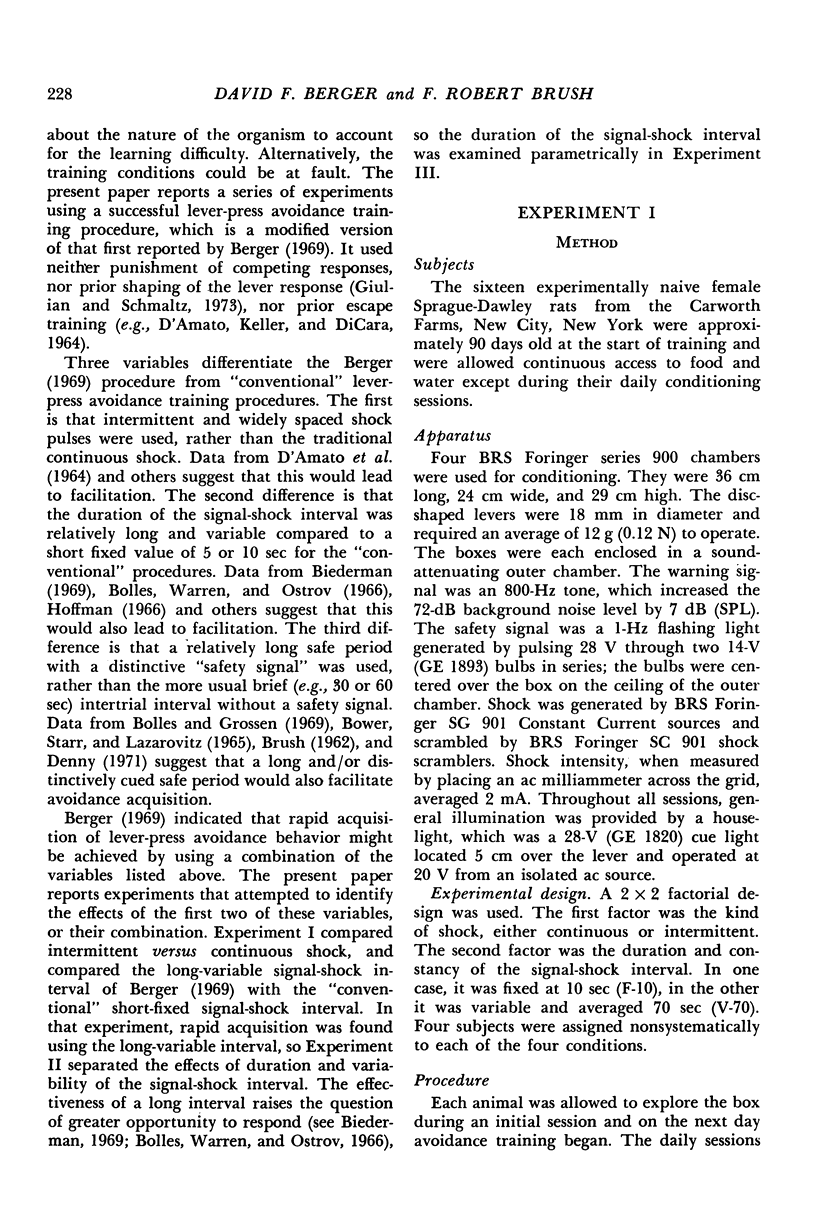
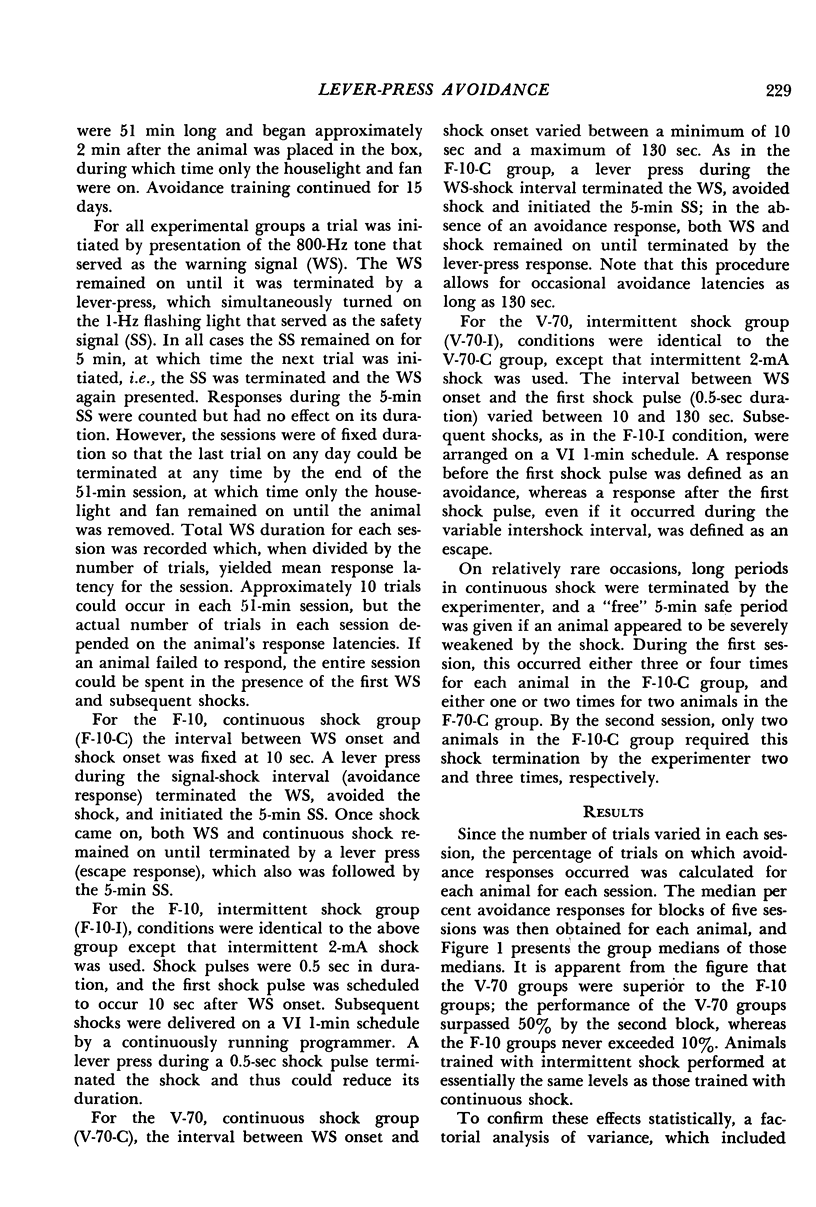
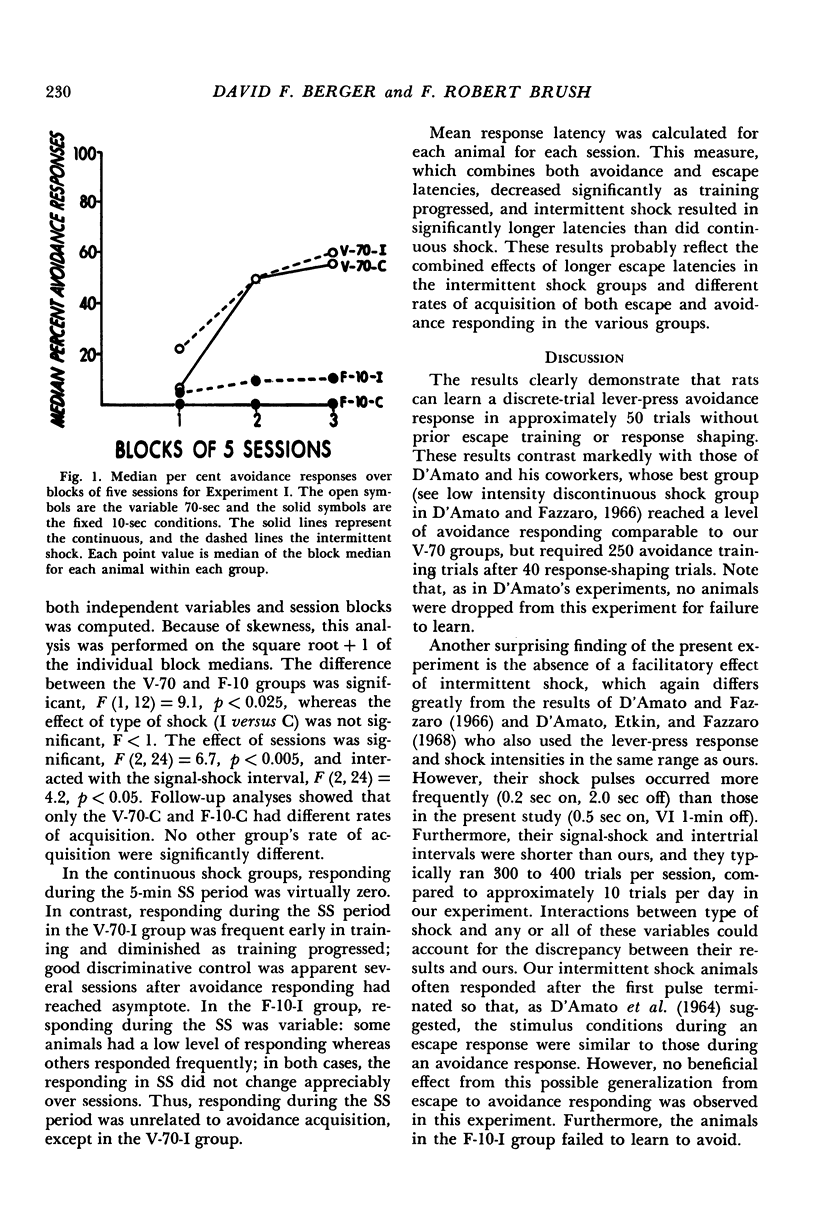
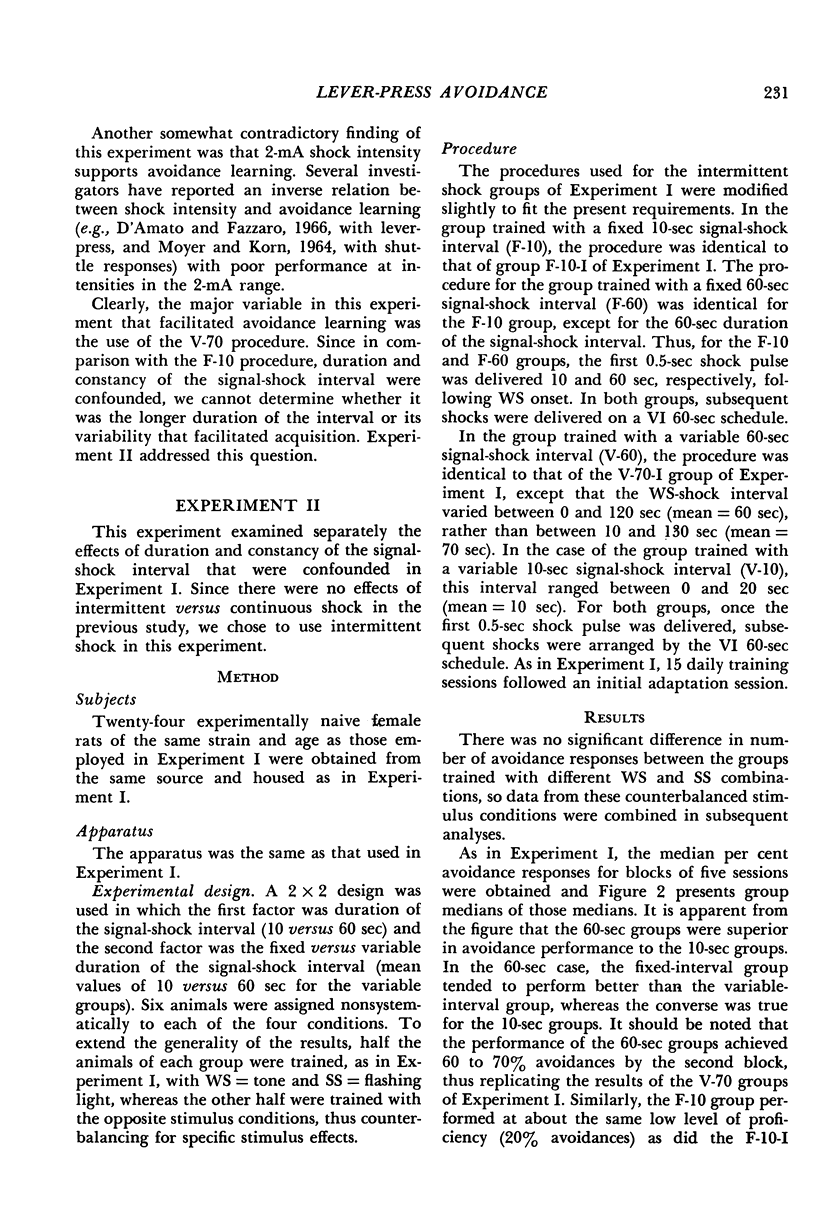
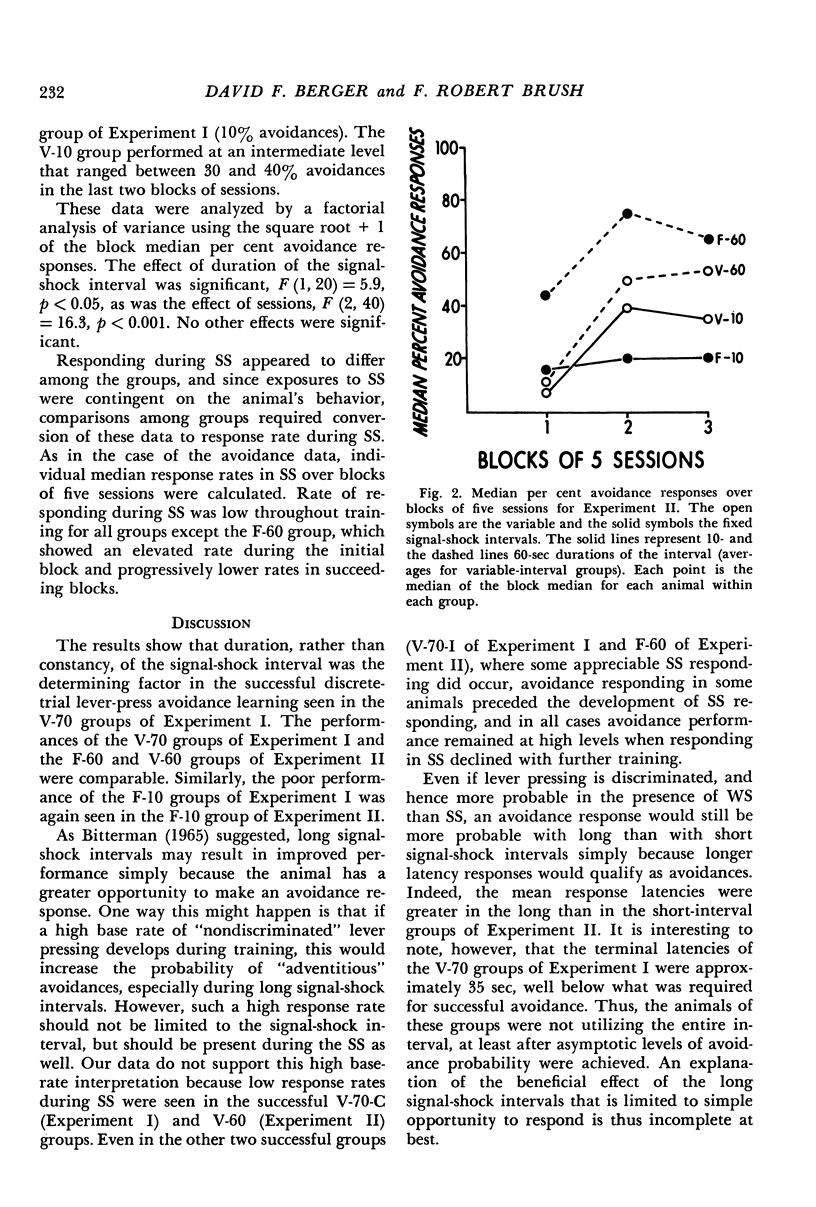
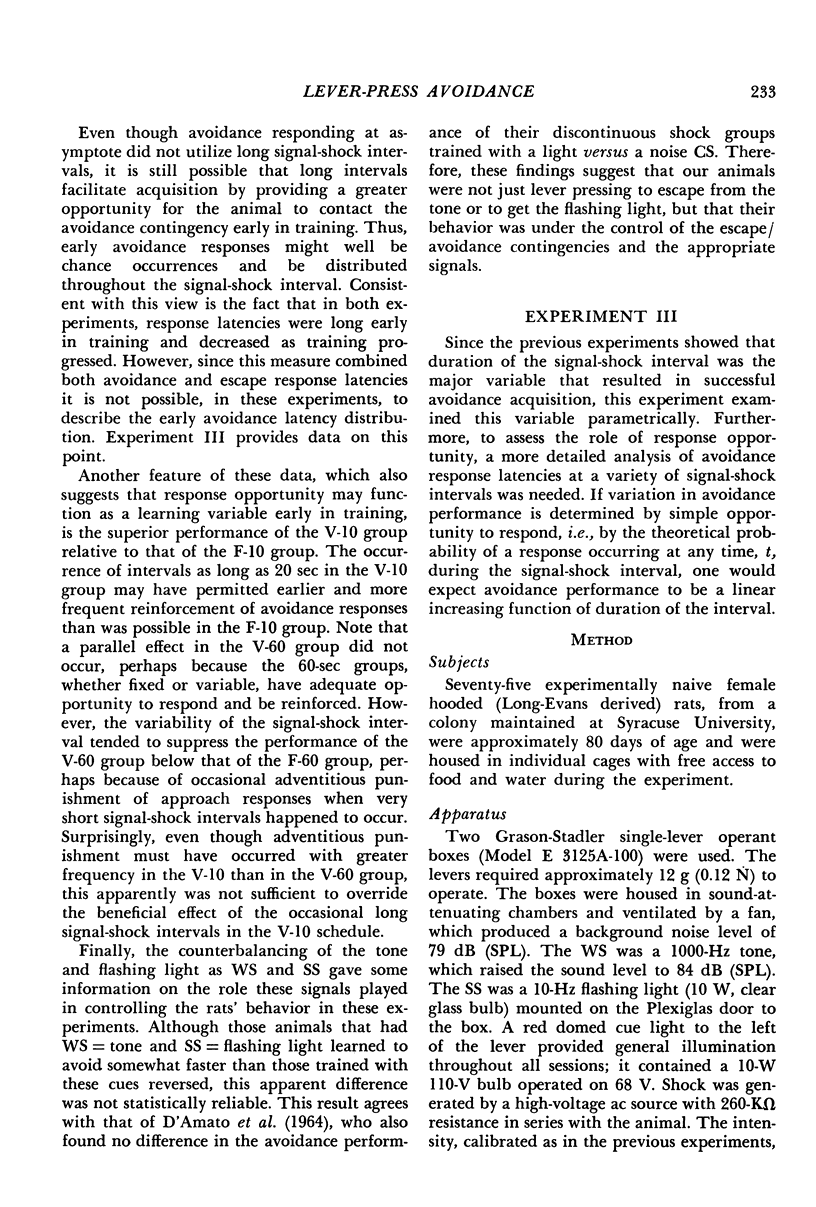
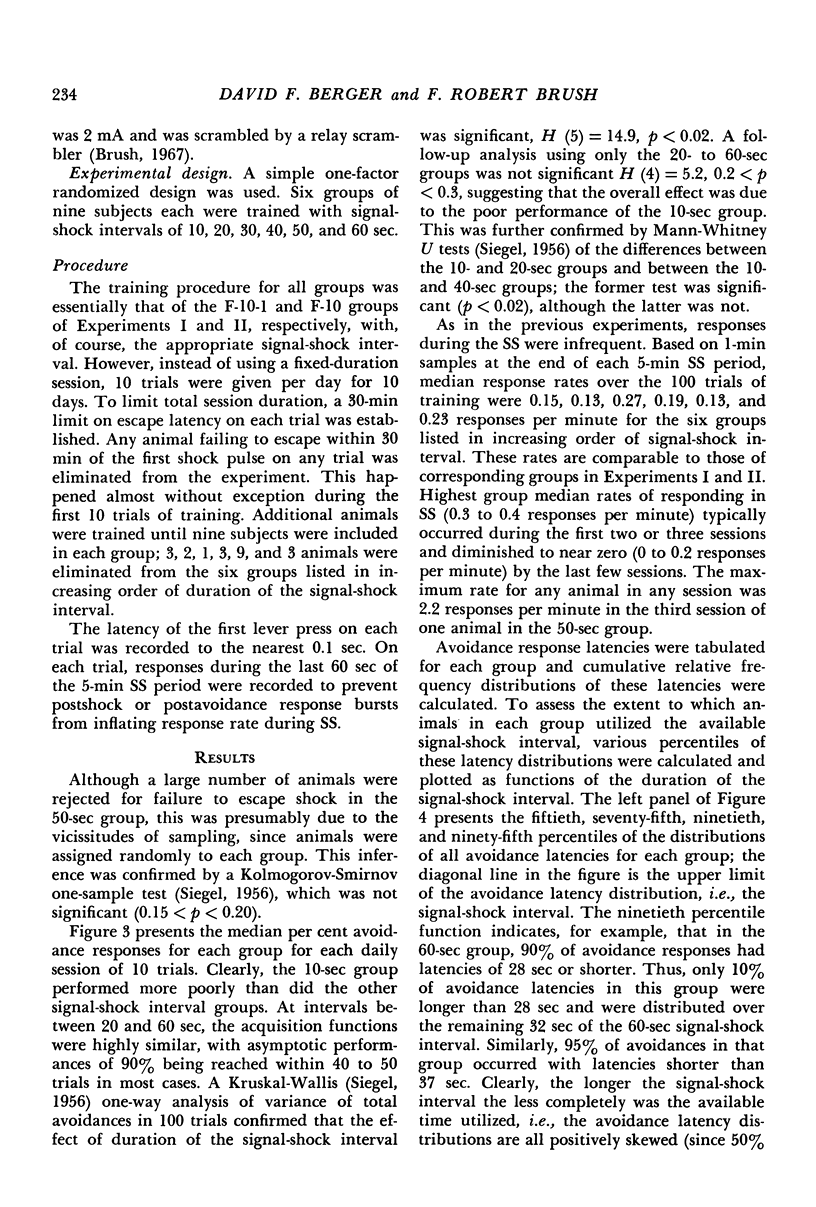
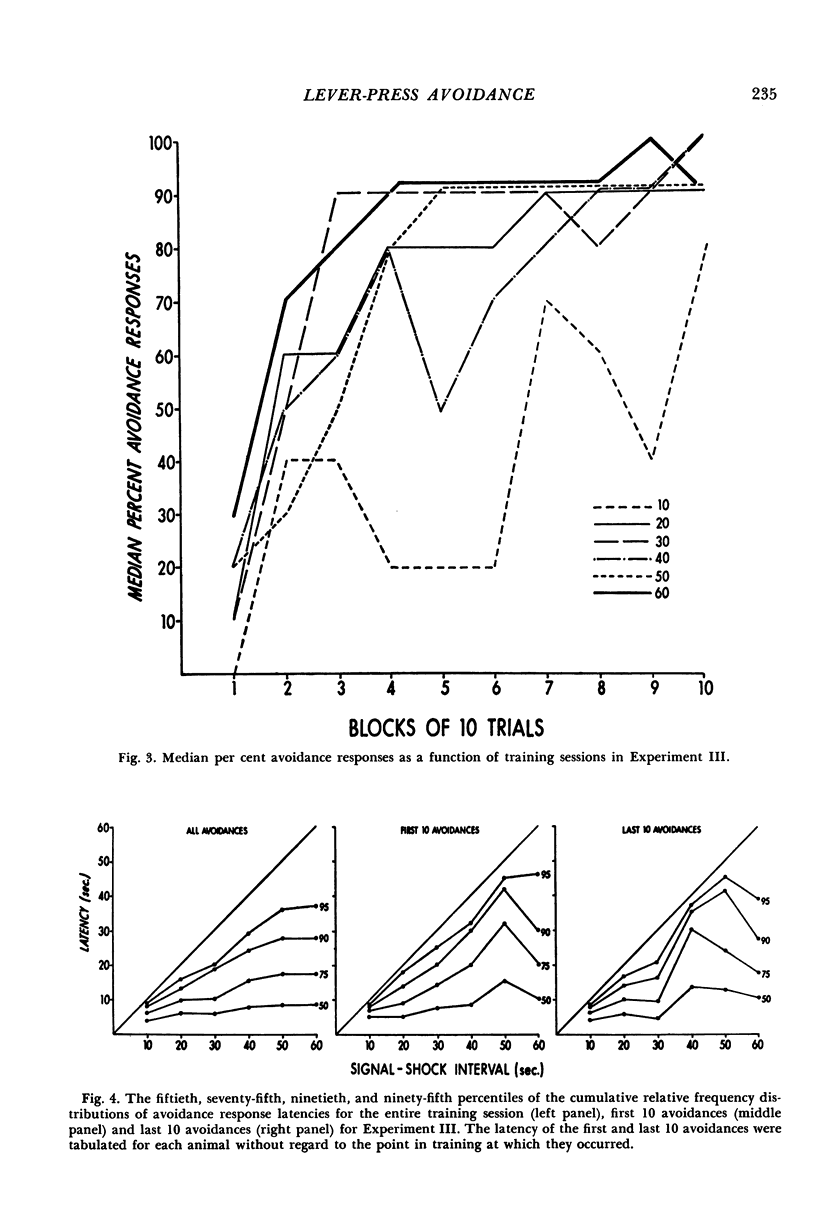
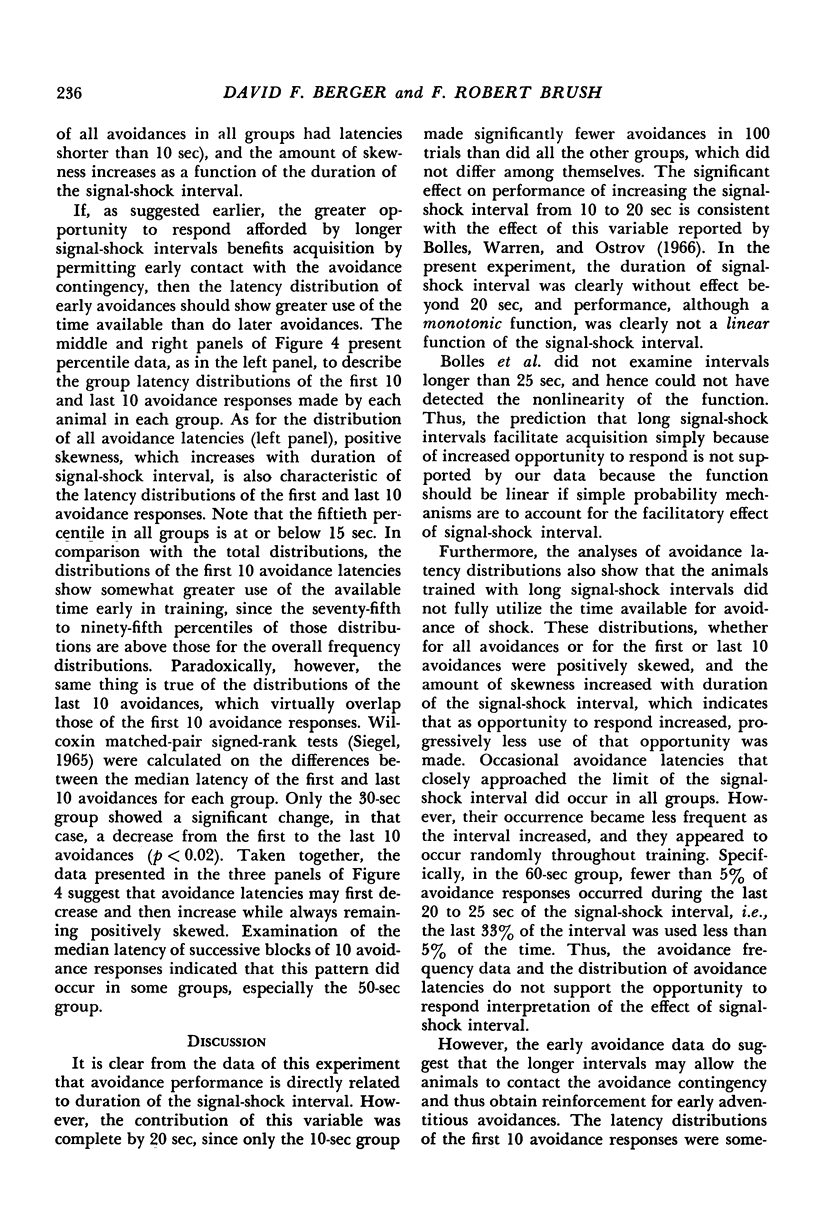
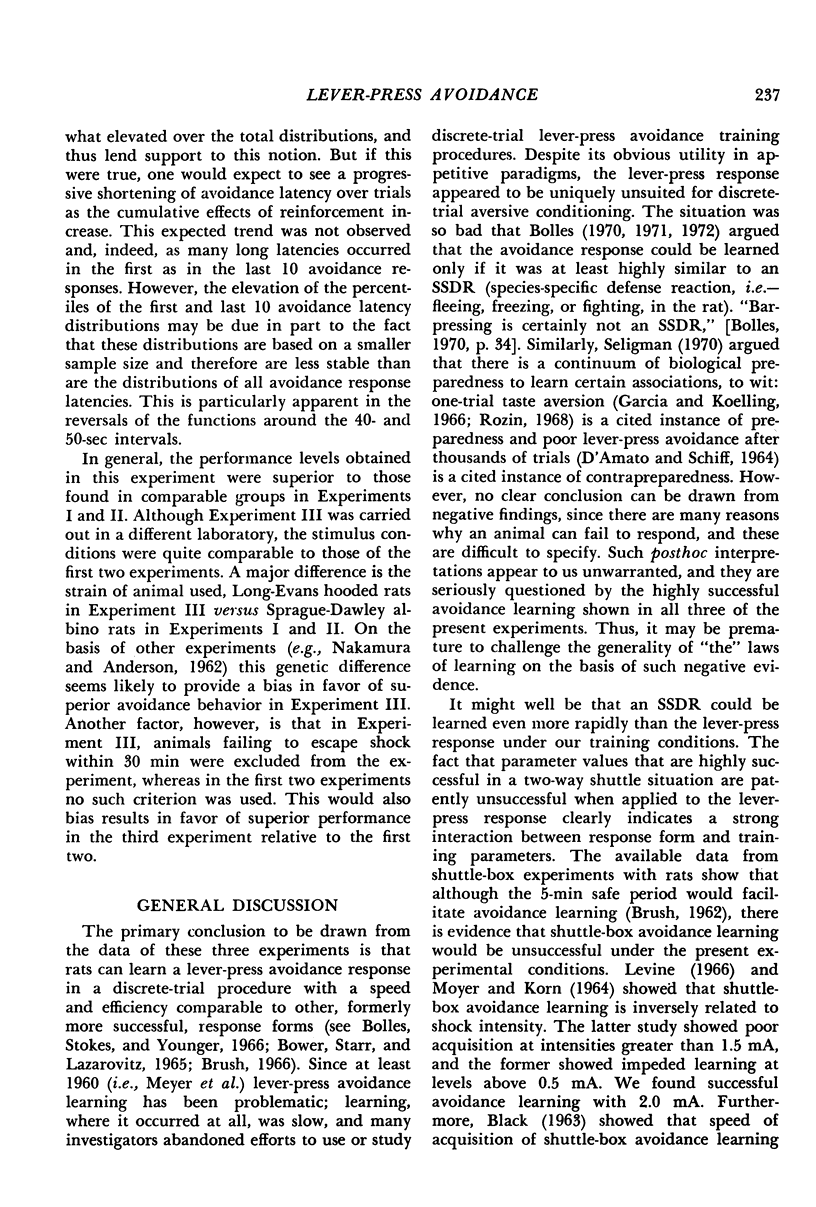
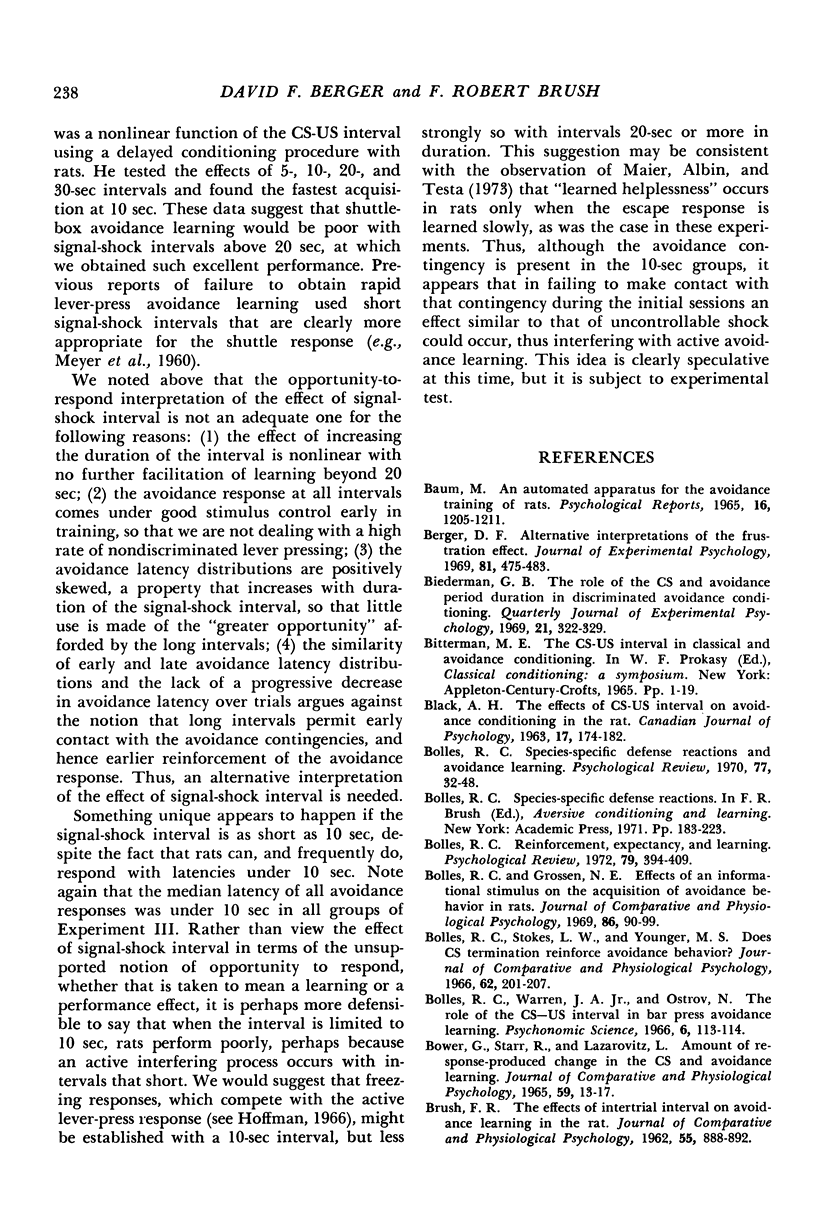
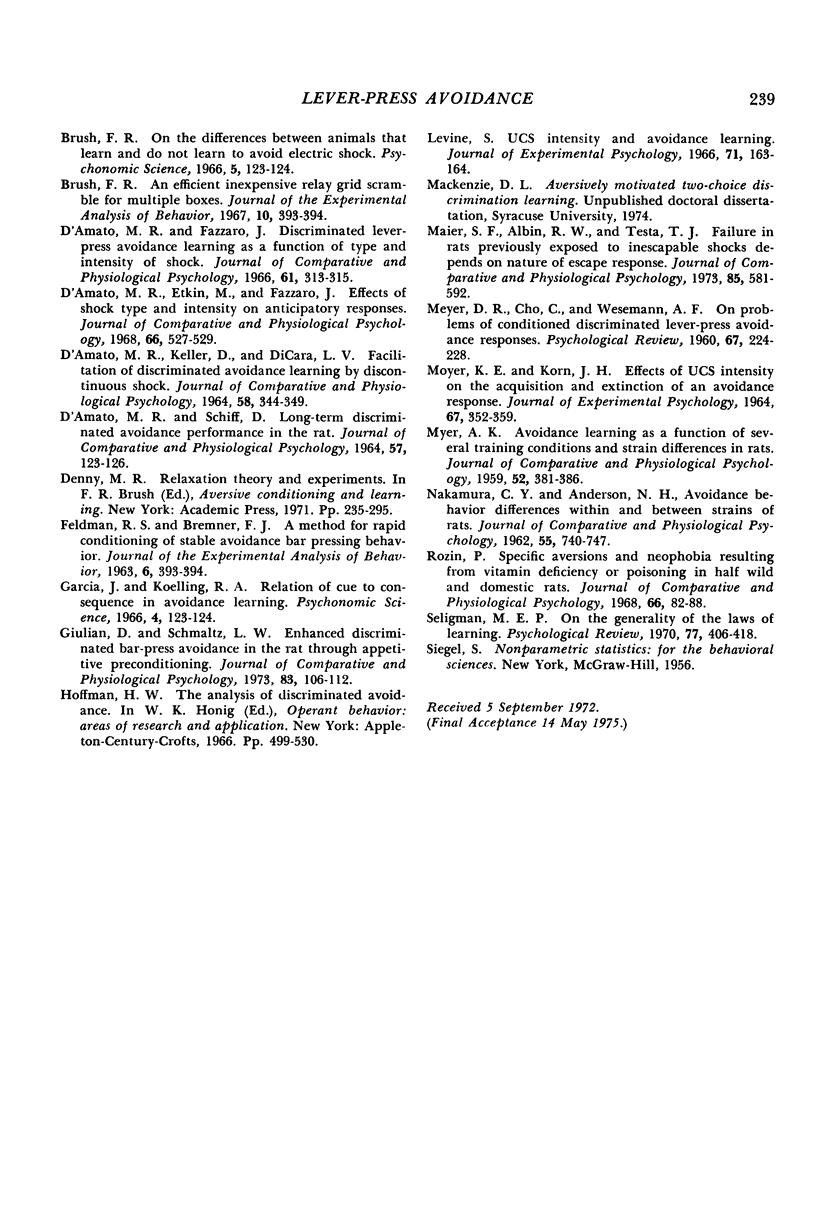
Selected References
These references are in PubMed. This may not be the complete list of references from this article.
- BLACK A. H. The effects of CS-US interval on avoidance conditioning in the rat. Can J Psychol. 1963 Jun;17:174–182. [PubMed] [Google Scholar]
- BOWER G., STARR R., LAZAROVITZ L. AMOUNT OF RESPONSE-PRODUCED CHANGE IN THE CS AND AVOIDANCE LEARNING. J Comp Physiol Psychol. 1965 Feb;59:13–17. doi: 10.1037/h0021623. [DOI] [PubMed] [Google Scholar]
- BRUSH F. R. The effects of intertrial interval on avoidance learning in the rat. J Comp Physiol Psychol. 1962 Oct;55:888–892. doi: 10.1037/h0045131. [DOI] [PubMed] [Google Scholar]
- Biederman G. B. The role of the cs and avoidance period duration in discriminated avoidance conditioning. Q J Exp Psychol. 1969 Nov;21(4):322–329. doi: 10.1080/14640746908400227. [DOI] [PubMed] [Google Scholar]
- Bolles R. C., Stokes L. W., Younger M. S. Does CS termination reinforce avoidance behavior? J Comp Physiol Psychol. 1966 Oct;62(2):201–207. doi: 10.1037/h0023678. [DOI] [PubMed] [Google Scholar]
- Brush F. R. An efficient, inexpensive relay grid scrambler for multiple boxes. J Exp Anal Behav. 1967 Jul;10(4):393–394. doi: 10.1901/jeab.1967.10-393. [DOI] [PMC free article] [PubMed] [Google Scholar]
- D AMATO M. R., KELLER D., DICARA L. FACILITATION OF DISCRIMINATED AVOIDANCE LEARNING BY DISCONTINUOUS SHOCK. J Comp Physiol Psychol. 1964 Dec;58:344–349. doi: 10.1037/h0045141. [DOI] [PubMed] [Google Scholar]
- D AMATO M. R., SCHIFF D. LONG-TERM DISCRIMINATED AVOIDANCE PERFORMANCE IN THE RAT. J Comp Physiol Psychol. 1964 Feb;57:123–126. doi: 10.1037/h0046678. [DOI] [PubMed] [Google Scholar]
- D'Amato M. R., Etkin M., Fazzaro J. Effects of shock type and intensity on anticipatory responses. J Comp Physiol Psychol. 1968 Oct;66(2):527–529. doi: 10.1037/h0026364. [DOI] [PubMed] [Google Scholar]
- D'Amato M. R., Fazzaro J. Discriminated lever-press avoidance learning as a function of type and intensity of shock. J Comp Physiol Psychol. 1966 Apr;61(2):313–315. doi: 10.1037/h0023146. [DOI] [PubMed] [Google Scholar]
- FELDMAN R. S., BREMNER F. J. A method for rapid conditioning of stable avoidance bar pressing behavior. J Exp Anal Behav. 1963 Jul;6:393–394. doi: 10.1901/jeab.1963.6-393. [DOI] [PMC free article] [PubMed] [Google Scholar]
- Giulian D., Schmaltz L. W. Enhanced discriminated bar-press avoidance in the rat through appetitive preconditioning. J Comp Physiol Psychol. 1973 Apr;83(1):106–112. doi: 10.1037/h0034323. [DOI] [PubMed] [Google Scholar]
- Levine S. UCS intensity and avoidance learning. J Exp Psychol. 1966 Jan;71(1):163–164. doi: 10.1037/h0022690. [DOI] [PubMed] [Google Scholar]
- MOYER K. E., KORN J. H. EFFECT OF UCS INTENSITY ON THE ACQUISITION AND EXTINCTION OF AN AVOIDANCE RESPONSE. J Exp Psychol. 1964 Apr;67:352–359. doi: 10.1037/h0039933. [DOI] [PubMed] [Google Scholar]
- MYERS A. K. Avoidance learning as a function of several training conditions and strain differences in rats. J Comp Physiol Psychol. 1959 Aug;52:381–386. doi: 10.1037/h0041312. [DOI] [PubMed] [Google Scholar]
- NAKAMURA C. Y., ANDERSON N. H. Avoidance behavior differences within and between strains of rats. J Comp Physiol Psychol. 1962 Oct;55:740–747. doi: 10.1037/h0044433. [DOI] [PubMed] [Google Scholar]
- Rozin P. Specific aversions and neophobia resulting from vitamin deficiency or poisoning in half-wild and domestic rats. J Comp Physiol Psychol. 1968 Aug;66(1):82–88. doi: 10.1037/h0025974. [DOI] [PubMed] [Google Scholar]


